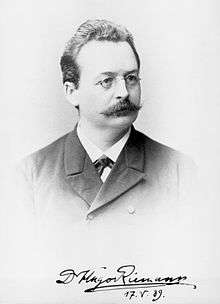Terzschritt

In music theory, Terzschritt (De: third step) is a dualistic major third relationship, in which the ascending progression from a major tonic triad to major mediant triad is equivalent to the descending one between a major tonic triad and a flat subdominant minor triad. The major chord on the mediant is itself the Terzklang (De: third chord).
"'Where is the E major chord in C major?'...a Terzschritt from the tonic....'What is the E major triad in C major?'...a Terzklang....'How does the E major triad make sense in C major?'...it functions either as III+...or as [D](SP)."[1] The subdominant parallel (Sp) of the dominant ([D]), G, is E ([D](Sp)).
In the work of Hugo Riemann (1849-1919), inversionally related chord progressions are grouped together: the progressions C major->E major and C minor->Ab minor belong to the same category: "Terzschritt" (see counter parallel). The first of these moves a major triad up by major third, while the second moves a minor triad down by major third, with the switch from ascending to descending motion accompanying the change from major to minor. In the context of neo-Riemannian theory, this transformation is called "L-then-P". The basic transformations of neo-Riemannian theory, discussed below, all associate changes in direction with the switch from major to minor.
Sources
- ↑ Kopp, David (2006). Chromatic Transformations in Nineteenth-Century Music, p.99n98. ISBN 0-521-02849-3.
